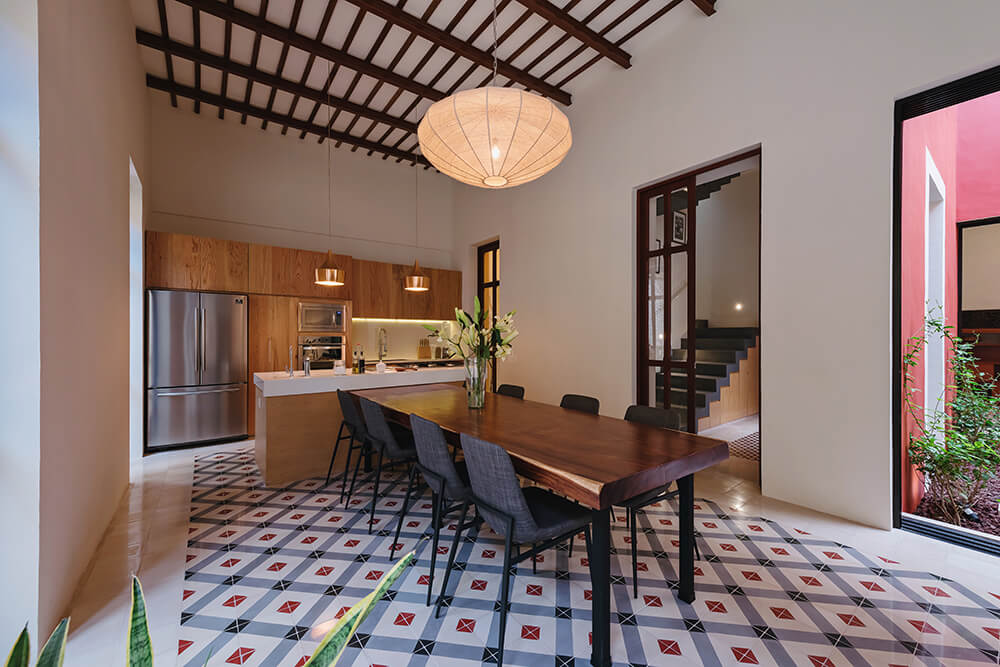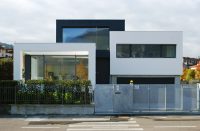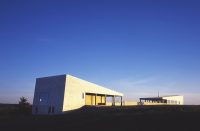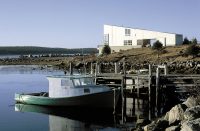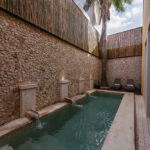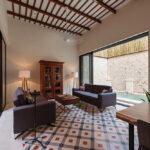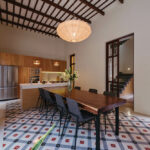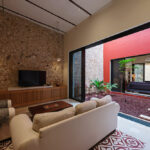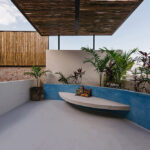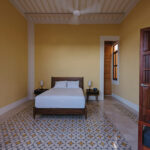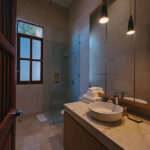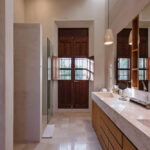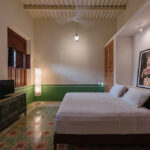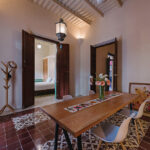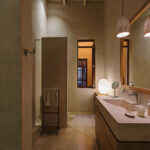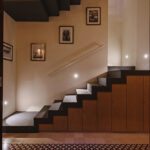Architect(s): Taller Estilo Arquitectura
Address: Calle 72 por 51 y 53, Colonia Centro, MÉRIDA, Mexico
Latitude/Longitude: 20.973306,-89.629167
Photographs: Tamara Uribe
Located in the Barrio de Santiago, Colibrí House in a Casona (Old House) at Merida historic center with colonial chacateristics that had different architectonic restoration actions, going by a rehabilitation process to consolidate the damaged physical areas from the building; also restructuring some elements to extend the living area to fulfill the programmatic needs of the household and finally a partial remodeling of the construction to create a living space for enjoyment of the exterior functionally and in symbolic ways.
A spatial analysis of the construction was done to determine the spaces and their use: the first double centerline, being the oldest, had been respected and adapted for new functions, to enhance the original constructive system based on beams and wooden joists, replacing damaged wall finishes, removing decorated paste floors to be used on bedrooms and restoring original natural wood doors for a contemporary touch.
For air flow and illumination in a natural way, it was inserted a central patio with stone covered walls, same as the ones in the living room and swimming pool patio giving a continuity and amplitude sensation of the spaces; there were settled a series of gardens being the central patio that gives order to the household. We also included some additional door openings that allow natural illumination in the building and also create a symmetrical composition in the patio’s interior facade.
Managing textures and materials such as pasta floors, concrete, stone, metal and wood give character to spaces, providing warmth and functionality, achieving a blend of traditional materials and contemporary forms.
As in all the projects where rehabilitation is involved, extension of old structures were organized according the programmatic needs of the project, leaving the main floor for being, recreation and entertainment meanwhile the upper level is for bedrooms mainly incorporating garden terraces for mitigating the odd visual impact form the neighbors rooftops.
A living place that becomes anonymous because of the tree which protects the context, but shows the interior site of a town with history.
Text description provided by the architects.
Builder: Taller Estilo Arquitectura S. de R. L. de C. V.
Colaborators: Arq. Silvia Cuitún Coronado, Arq. Andrea Balam Lizama, Arq. Adrián Aarón Morales Ramírez
Contributed by Taller Estilo Arquitectura

